20 Coolest Neighborhoods Around The World You Need To See
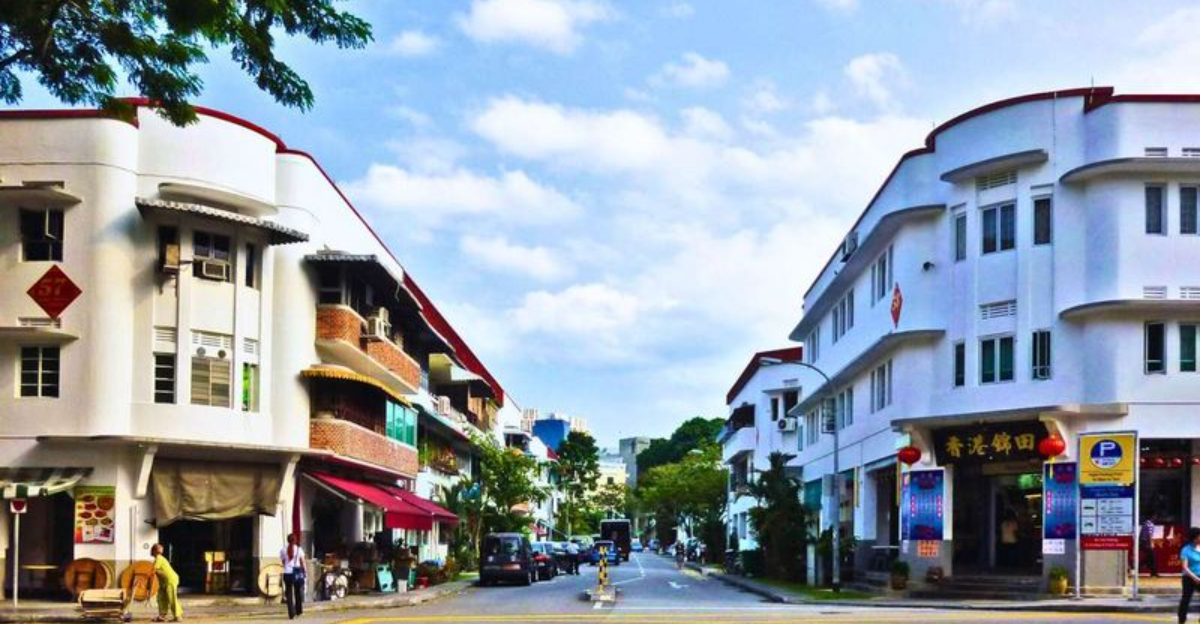
Ever wonder where the real heartbeat of a city lives? Hidden away from tourist traps, the world’s coolest neighborhoods offer authentic glimpses into local life, cutting-edge art, and food scenes that will blow your mind.
These vibrant districts blend history with modern culture, creating spaces where tradition meets innovation.
Pack your walking shoes as we explore twenty neighborhoods where locals actually hang out – the kind of places that make you feel like you’ve discovered the city’s true soul.
1. Shibuya Buzz, Tokyo
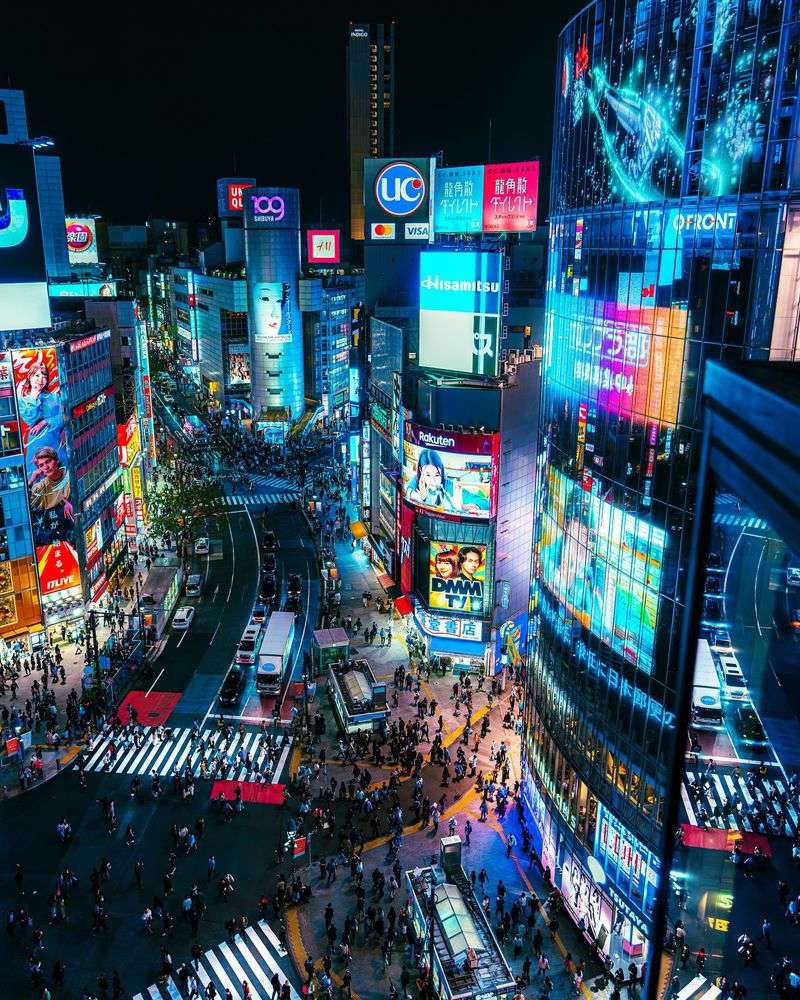
Neon lights flash overhead while thousands cross the famous Shibuya Scramble intersection – possibly the busiest pedestrian crossing on earth. This Tokyo district pulses with energy 24/7, drawing fashion-forward youth and technology enthusiasts alike.
Wandering through narrow backstreets reveals hidden ramen shops where steam rises from bowls of perfection. Record stores and vintage shops sit alongside futuristic gaming centers.
The neighborhood embodies Japan’s fascinating contrast between tradition and hyper-modernity. Don’t miss Yoyogi Park on Sundays when rockabilly dancers gather in leather jackets, defying expectations in a culture known for conformity.
2. Coyoacán Culture, Mexico City
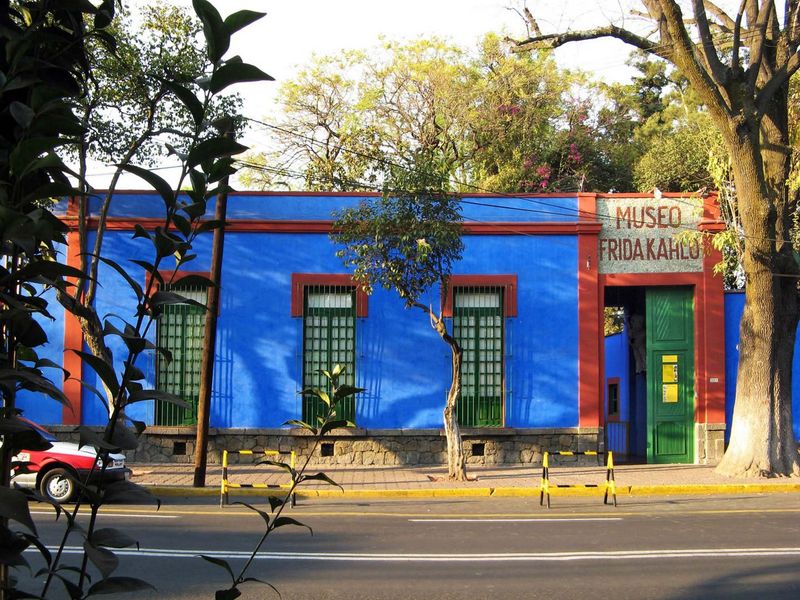
Frida Kahlo once called this neighborhood home, and her vibrant spirit lives on in its cobblestone streets. Coyoacán feels like stepping into old Mexico, with colonial buildings painted in warm yellows, blues, and terracottas surrounding leafy plazas where musicians play.
Weekends transform the main square into a bustling market where artisans sell handmade jewelry and street food vendors tempt with elotes and churros. The famous Casa Azul (Blue House) museum preserves Frida’s living spaces exactly as she left them.
Though part of massive Mexico City, this district maintains a village-like atmosphere where locals chat on benches and sip coffee at sidewalk cafes.
3. Kreuzberg Edge, Berlin
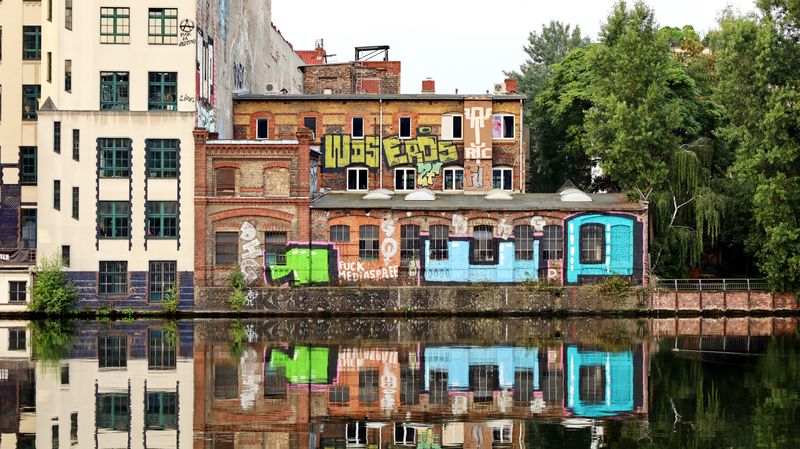
Anarchists, artists, and Turkish immigrants shaped this Berlin district into a counterculture paradise. Graffiti-covered buildings tell stories of political resistance, while the scent of döner kebab wafts from family-run shops that line Oranienstraße.
Kreuzberg survived the Berlin Wall era as a forgotten edge neighborhood, allowing alternative lifestyles to flourish. Today, abandoned factories have transformed into underground clubs where techno beats pound until dawn.
During summer, locals gather along the canal banks with beers and portable speakers, creating impromptu parties. This raw, unpolished neighborhood represents Berlin’s famous ‘poor but sexy’ attitude – authentic and unapologetically itself.
4. Le Marais Charm, Paris

Medieval mansions stand shoulder-to-shoulder with trendy boutiques in this Parisian gem. Le Marais escaped Baron Haussmann’s 19th-century demolitions, preserving narrow streets that feel distinctly un-Parisian yet quintessentially so.
Jewish bakeries sell challah bread alongside gay bars and fashion-forward shops. The neighborhood transforms on Sundays when many Paris districts shut down – here, everything stays open, creating a lively weekend atmosphere.
If you seek Paris beyond the Eiffel Tower clichés, Le Marais delivers with its hidden courtyards and falafel stands. Locals crowd Place des Vosges, Paris’ oldest planned square, for picnics under symmetrical arches that have witnessed centuries of Parisian life.
5. Silver Lake Vibe, LA
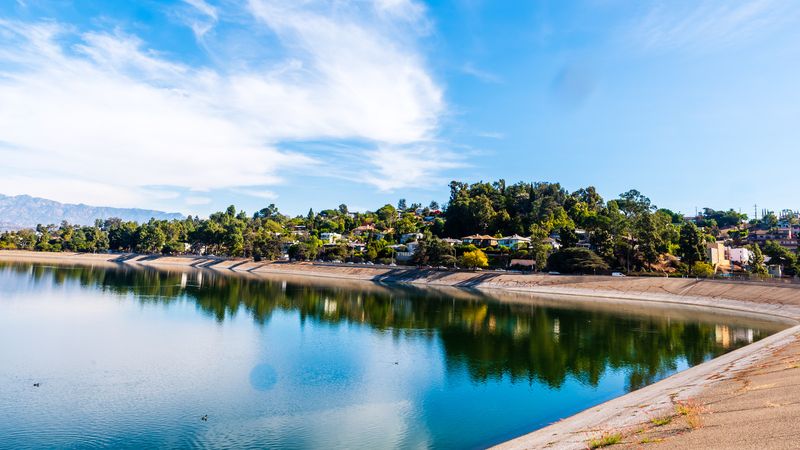
Hipsters found their paradise in this hillside Los Angeles neighborhood where vintage shops and third-wave coffee bars line Sunset Boulevard. Silver Lake represents LA beyond Hollywood glitz – it’s where musicians, artists, and writers create the city’s actual culture.
The reservoir that gives the area its name provides a peaceful walking path where locals exercise with panoramic city views. Colorful staircases painted by residents connect the neighborhood’s steep sections, becoming unexpected public art.
Food here ranges from authentic taco trucks to experimental vegan restaurants. Evening brings crowds to intimate music venues where tomorrow’s indie stars perform before they hit mainstream success.
6. Poblenou Nights, Barcelona
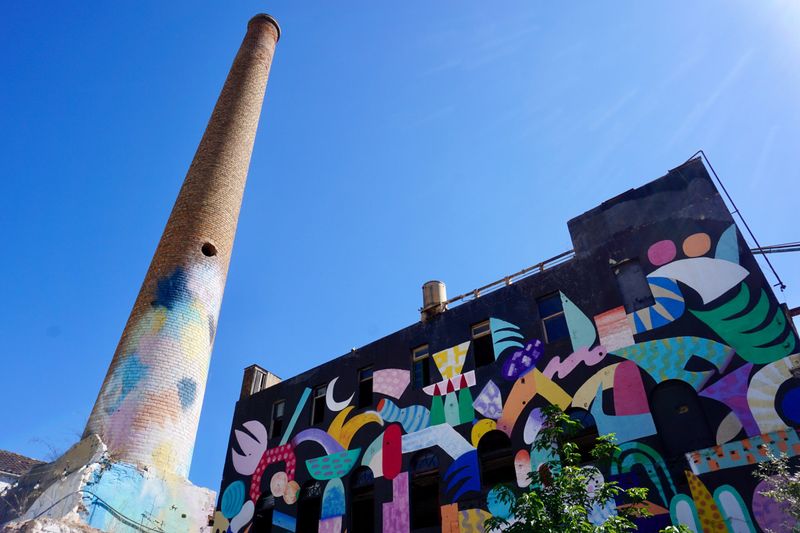
Barcelona’s former industrial zone has reinvented itself as a creative playground. Old textile factories now house tech startups and design studios, while their brick chimneys stand as monuments to the neighborhood’s working-class history.
Rambla del Poblenou serves as the social spine where families stroll and friends gather at outdoor tables long into the evening. Unlike tourist-packed Las Ramblas downtown, this tree-lined boulevard belongs to locals.
The beach here offers a quieter alternative to Barceloneta’s crowds. Watch as elderly neighbors play pétanque (a bowling game) in small plazas while young designers sketch in collaborative workspaces nearby – a perfect example of Barcelona’s generational blend.
7. Fitzroy Street Art, Melbourne
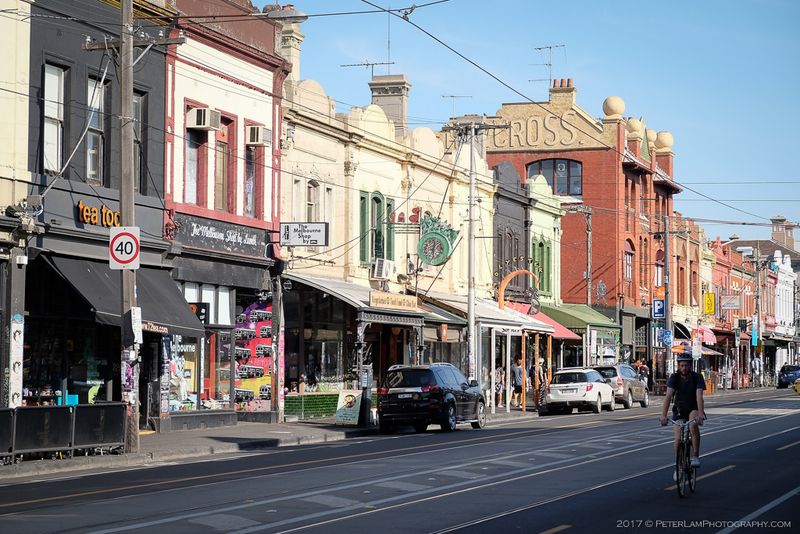
Aboriginal art galleries share streets with punk rock venues in Melbourne’s original bohemian district. Fitzroy birthed Australian counterculture and still embraces its rebellious spirit through ever-changing murals that transform mundane walls into open-air galleries.
Brunswick Street cuts through the neighborhood’s heart, offering vintage clothing stores where fashion students hunt for inspiration. Coffee culture reaches religious proportions here – baristas compete for the perfect flat white in cafes that double as community living rooms.
Victorian-era terrace houses painted in unexpected colors give the area architectural character. Listen for conversations about politics, art, and social justice – Fitzroy has always been Melbourne’s conscience and creative engine.
8. Vesterbro Cool, Copenhagen
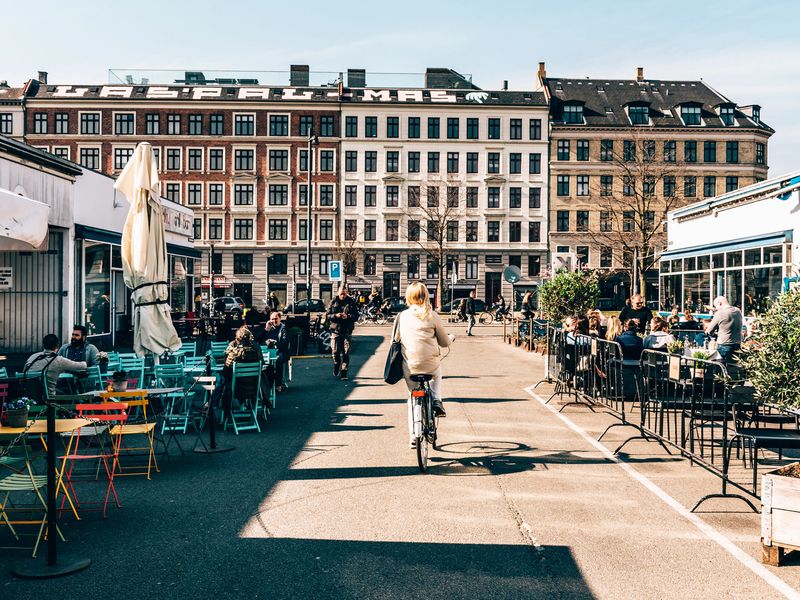
From red-light district to family-friendly hipster haven, Vesterbro’s transformation embodies Copenhagen’s progressive spirit. Meatpacking District warehouses now host natural wine bars and art galleries instead of butchers, though some original meat businesses remain alongside the newcomers.
Biking is the transportation mode of choice – locals pedal stylishly between craft breweries and design shops. Istedgade, once notorious for prostitution, now bustles with young parents pushing designer strollers.
Danish hygge (coziness) philosophy shines in candlelit cafes where locals escape winter darkness. The neighborhood maintains its edge while embracing change, creating a fascinating mix where old tattoo parlors operate next to children’s clothing boutiques.
9. El Poblado Pulse, Medellín
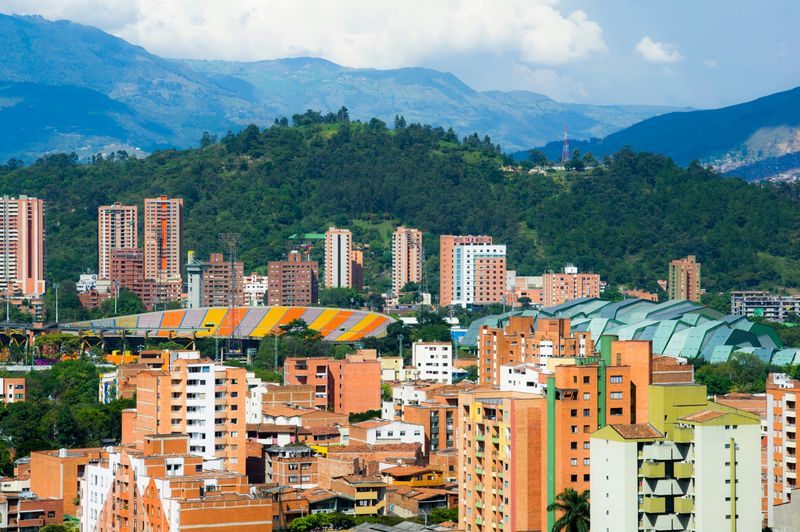
Lush greenery surrounds this hillside district where Medellín’s transformation from dangerous to innovative city is most visible. El Poblado shifted from cocaine cartel territory to Colombia’s safest neighborhood in just two decades.
Digital nomads tap on laptops in coffee shops built inside colonial homes. Parque Lleras forms the social center where locals and visitors mingle over Club Colombia beers and empanadas as salsa music drifts through tropical air.
The neighborhood exemplifies Medellín’s famous social urbanism – thoughtful design that healed a wounded city. Modern apartment towers rise above flowering trees, creating a unique urban jungle where birds and butterflies thrive alongside city life.
10. Gràcia Local Life, Barcelona
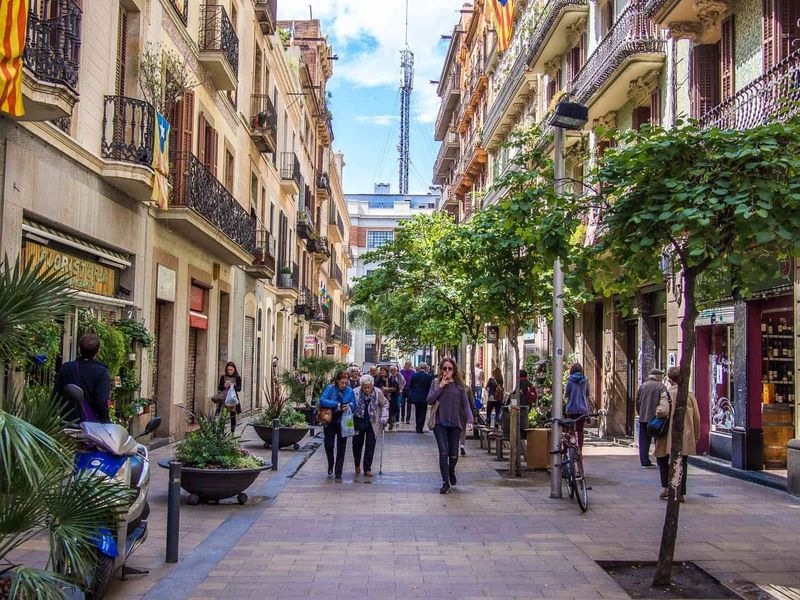
This former village absorbed by Barcelona’s expansion maintains its independent identity. Gràcia’s narrow streets open into charming plazas where elderly residents play cards while young families chase toddlers around fountains.
August brings the famous Festa Major when neighbors compete to decorate their streets with elaborate handmade displays. Catalan flags hang from balconies year-round, signaling the area’s strong regional pride and political activism.
Vermouth culture thrives here – locals gather for pre-lunch drinks and small plates at traditional bodegas. Unlike tourist-focused neighborhoods nearby, Gràcia offers authentic Barcelona life where shopkeepers know customers by name and community still matters above commerce.
11. Wynwood Walls, Miami
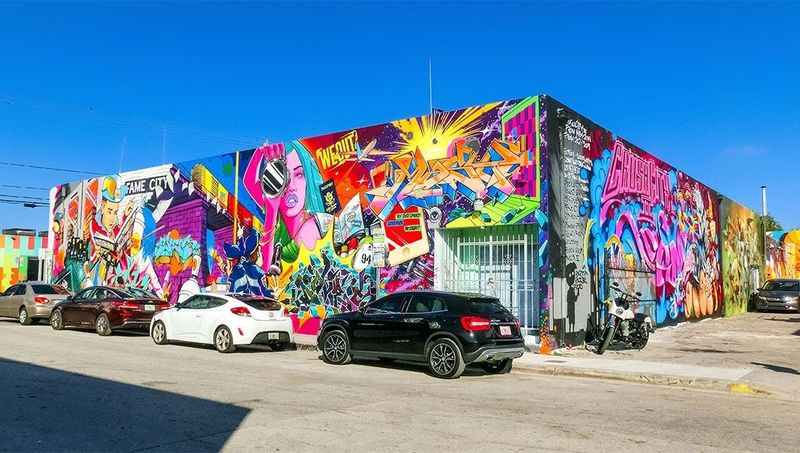
Abandoned warehouses became canvases for world-famous street artists in this Miami district that transformed through color. Wynwood emerged from a forgotten industrial zone into an outdoor museum where every surface showcases bold murals that change regularly.
Art galleries occupy former factories while food trucks serve Cuban-influenced dishes to crowds gallery-hopping on Second Saturday Art Walks. The neighborhood symbolizes Miami’s evolution beyond beach culture into a serious arts destination.
Brewery tours and boutique shopping complement the visual feast. Though now firmly on tourist maps, Wynwood maintains creative energy as new artists continually refresh its walls, ensuring the neighborhood remains as dynamic as the tropical city surrounding it.
12. Shoreditch Energy, London
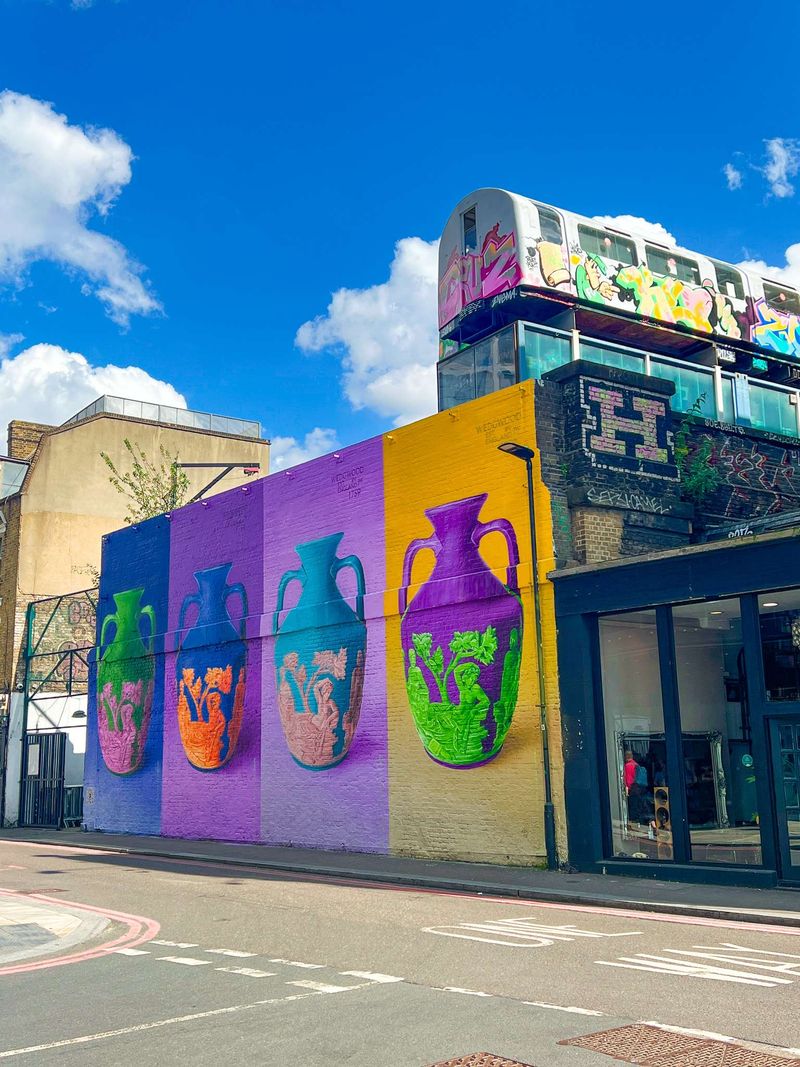
Victorian industrial buildings host fashion-forward boutiques in this East London district where creativity defies British reserve. Brick Lane’s Sunday market epitomizes Shoreditch – vintage clothes vendors operate alongside Bangladeshi curry houses and avant-garde art installations.
Street art tours reveal Banksy originals hidden on unsuspecting walls. The neighborhood’s rough edges remain despite gentrification, creating tension between new cocktail bars and traditional working-class pubs.
Boxpark’s shipping container shops showcase emerging designers. This district birthed many global trends before they went mainstream – from flat whites to beard oil. Though frequently declared ‘over’ by locals seeking the next cool thing, Shoreditch continues reinventing itself through sheer creative willpower.
13. Nørrebro Fusion, Copenhagen
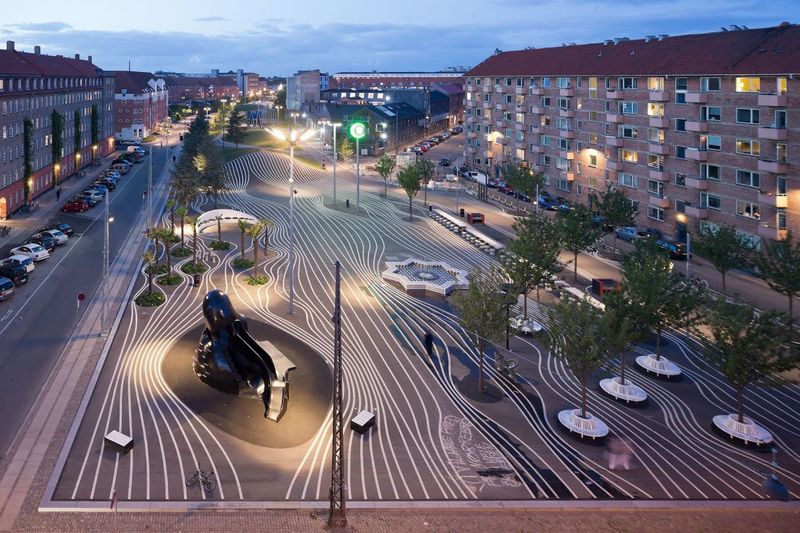
Middle Eastern shawarma shops sit beside Danish design studios in Copenhagen’s most diverse district. Nørrebro exemplifies successful multiculturalism – where immigrant communities and native Danes create something greater than either could alone.
Jægersborggade street transformed from crime hotspot to foodie destination through community-driven change. The cemetery-turned-park hosts picnics in summer, showing Denmark’s practical approach to urban space.
Architecture ranges from traditional Danish apartment blocks to bold modern additions. Young families pushed from the center by high prices brought new energy here. Superkilen Park represents the neighborhood perfectly – its red square, black market, and green park incorporate design elements from the 60+ nationalities living nearby.
14. Palermo Soho, Buenos Aires
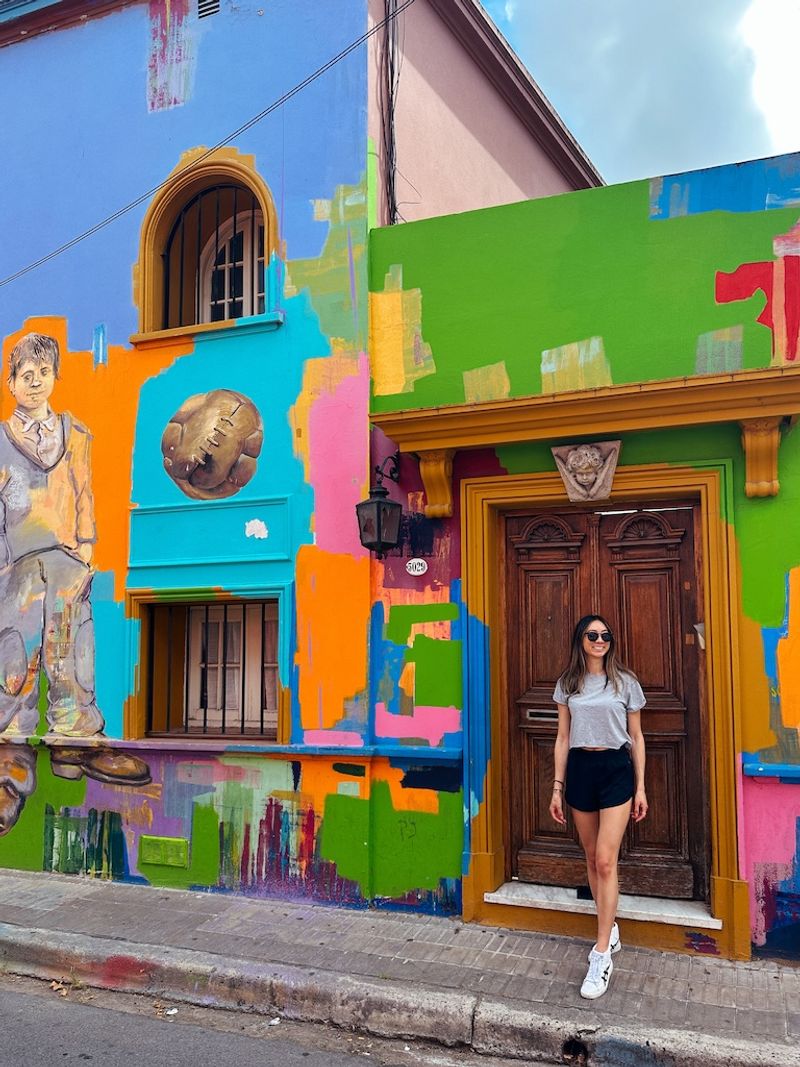
Tango dancers practice in parks while fashionable porteños (Buenos Aires locals) browse designer boutiques in this leafy district. Palermo Soho earned its nickname through similarities to New York’s famous neighborhood – both transformed from working-class areas to creative centers.
Low-rise buildings with street art contrast with traditional Argentine architecture. Weekend markets fill Plaza Serrano with handmade leather goods and mate tea accessories.
Restaurants spill onto sidewalks where dinner rarely starts before 10pm – Buenos Aires’ famous night owl culture is strongest here. This neighborhood epitomizes Argentina’s unique blend of European influence and Latin American spirit. Look for hidden speakeasies behind unmarked doors where cocktail culture thrives alongside traditional parrillas (steakhouses).
15. Hackescher Markt, Berlin
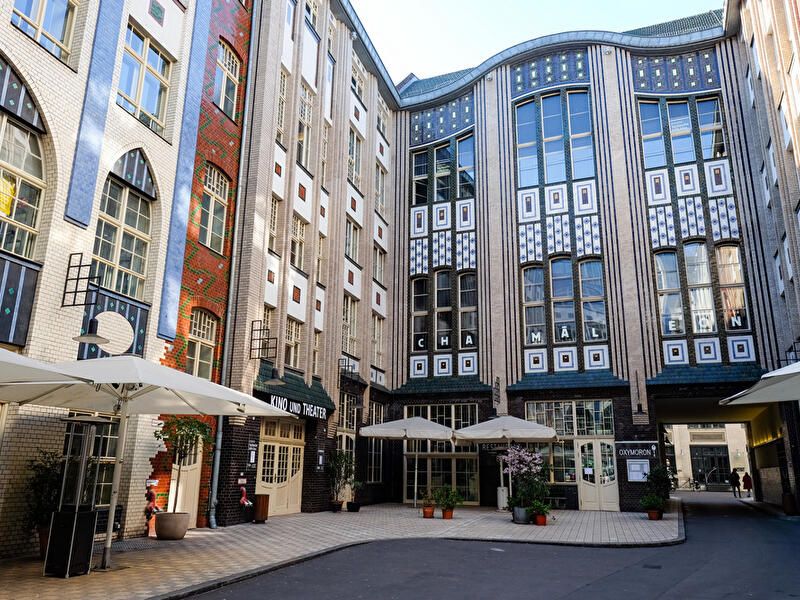
Communist-era buildings received colorful makeovers in this central Berlin district where East-West division once defined daily life. Hackescher Markt sits at the neighborhood’s heart – a transportation hub turned social center where street performers entertain crowds outside restored Art Nouveau buildings.
Hidden courtyards reveal surprising finds – tiny cinemas showing experimental films or workshops where craftspeople continue traditions dating to pre-war Berlin. The neighborhood exemplifies the city’s famous adaptive reuse philosophy.
Museum Island’s world-class institutions border this area, creating fascinating contrast between high culture and street level creativity. Though increasingly polished compared to grittier Berlin districts, Hackescher Markt maintains authentic character through independent businesses resisting chain store takeovers.
16. Trastevere Alleys, Rome
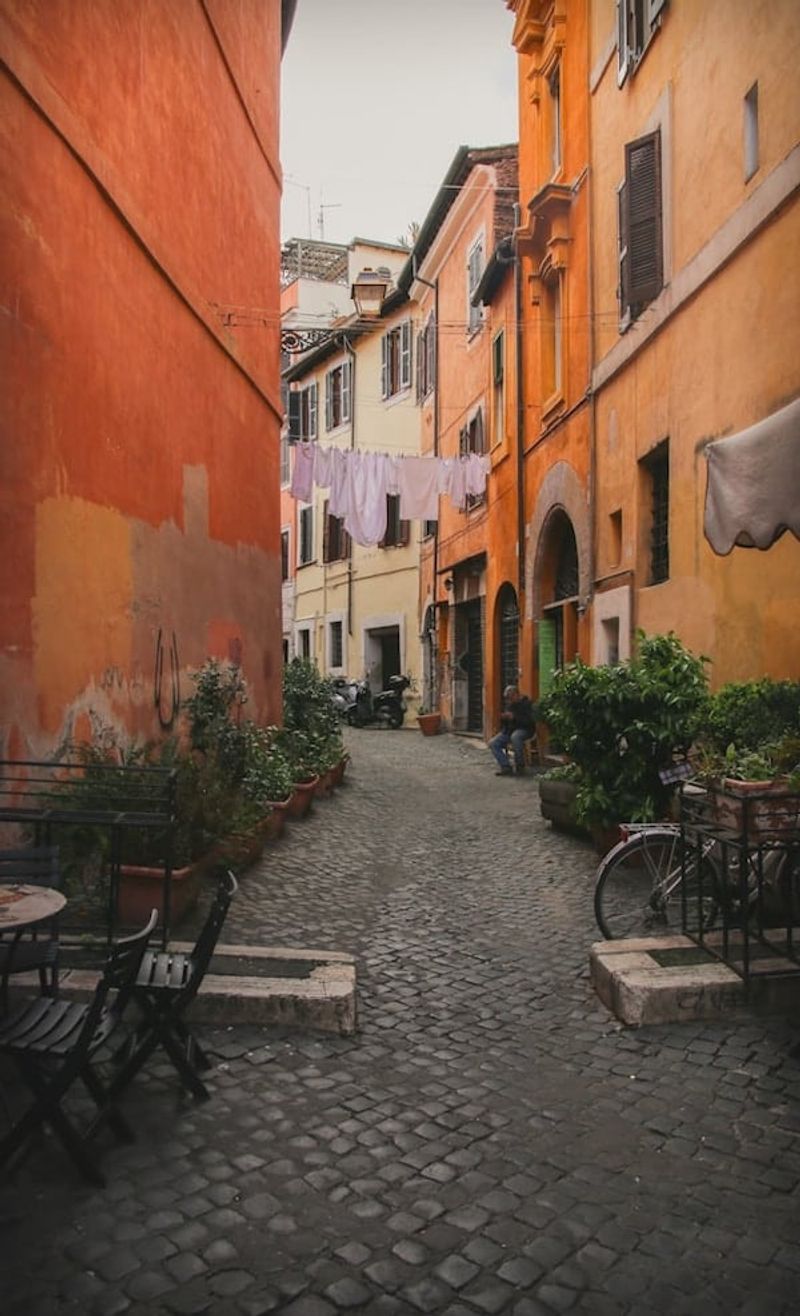
Laundry hangs between buildings above cobblestone streets too narrow for cars in this medieval Roman neighborhood. Trastevere means ‘across the Tiber’ – historically separate from central Rome, allowing it to develop distinct character and traditions.
Ivy-covered buildings surround small piazzas where locals gather at fountain edges. The neighborhood comes alive after dark when restaurants set tables outside and conversation flows with wine.
Centuries-old churches hide artistic masterpieces casual visitors might miss. Unlike Rome’s monument-heavy historic center, Trastevere offers living history where actual Romans still conduct daily life amid extraordinary beauty. The district balances tourism with authenticity better than most European destinations.
17. Psiri Art, Athens
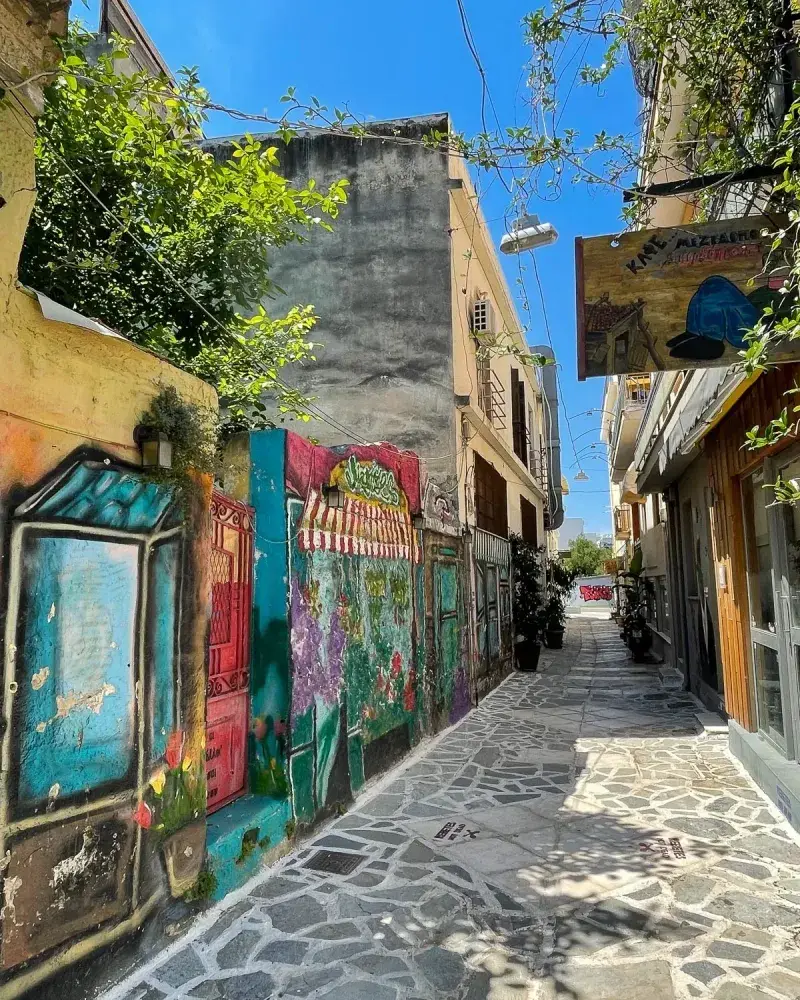
Ancient meets alternative in this Athens neighborhood where Byzantine churches share blocks with anarchist bookstores. Psiri survived as a working-class district while adjacent areas gentrified, maintaining workshops where artisans continue traditional crafts amid economic challenges.
Street art covers walls with political messages – Greece’s financial crisis sparked creative responses visible throughout the area. Small tavernas serve home-style Greek cooking at honest prices.
Though tourists find their way here for nightlife, genuine Athenian culture persists in morning markets and afternoon coffee rituals. The neighborhood sits in the Acropolis’ shadow yet feels worlds away from ancient monuments. Psiri represents modern Greek identity – proud of heritage while confronting contemporary realities.
18. Bushwick Murals, Brooklyn
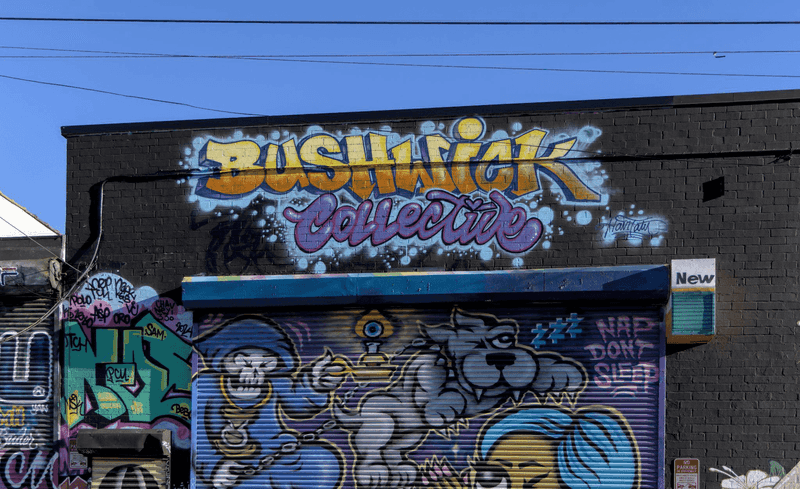
Former factories provide perfect canvases for massive murals in this Brooklyn neighborhood that artists reclaimed from industrial decline. Bushwick Collective gathers international street art talent, transforming blocks into outdoor galleries that change regularly as new works replace old.
Immigrant communities – particularly from Puerto Rico and Dominican Republic – bring vibrant culture that resists full gentrification. Weekend brunchers line up outside converted warehouses while longtime residents shop at traditional botanicas selling spiritual supplies.
DIY music venues host underground shows in seemingly abandoned buildings. This neighborhood represents Brooklyn’s famous creative energy and constant reinvention. Though rising rents threaten its artistic character, Bushwick continues fighting to maintain space for creative expression within New York’s expensive reality.
19. Tiong Bahru, Singapore
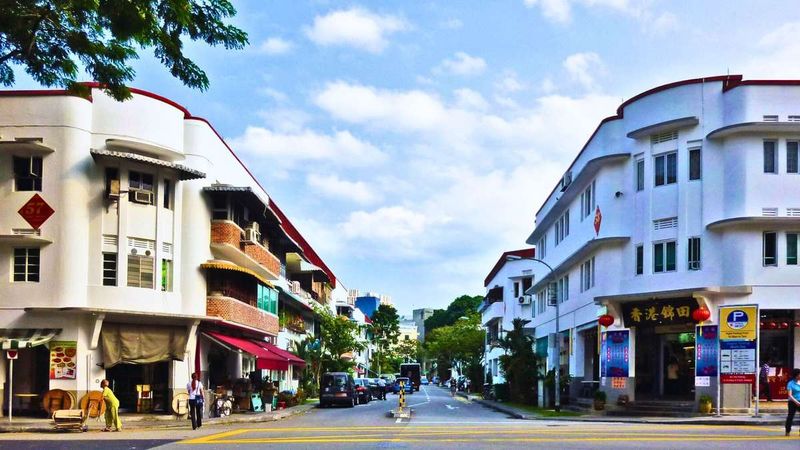
Art Deco buildings from the 1930s create architectural harmony in Singapore’s first planned neighborhood. Tiong Bahru balances preservation with progress – historic structures now house artisanal bakeries and independent bookshops alongside traditional medicine halls.
The wet market remains the community hub where elderly residents buy fresh ingredients daily while young professionals photograph their artfully plated brunch. This generational mix keeps the area authentic despite trendy newcomers.
Hidden air raid shelters from WWII remind visitors of the district’s historical significance. Unlike Singapore’s futuristic downtown, Tiong Bahru moves at slower pace where heritage buildings with rounded corners and spiral staircases create a distinct atmosphere that feels simultaneously vintage and contemporary.
20. São Cristóvão, Rio
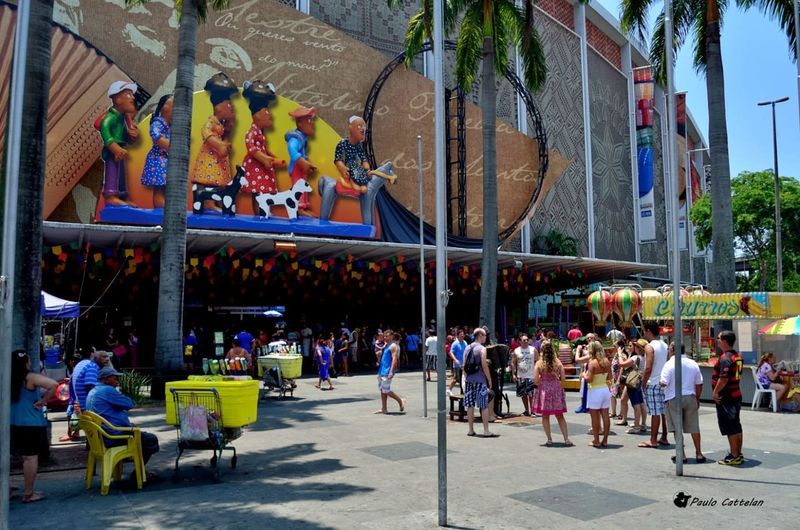
Portuguese immigrants shaped this Rio neighborhood into a little corner of Europe in Brazil. São Cristóvão’s weekend fair transforms an otherwise quiet district into celebration of northeastern Brazilian culture with forró music, regional foods, and handicrafts.
The imperial palace-turned-museum reminds visitors that this area once housed Brazilian royalty. Today, working-class families maintain traditions while young artists discover affordable studios away from tourist zones.
Street vendors sell tropical fruits under palm trees while colonial architecture creates European atmosphere. This neighborhood offers authentic carioca (Rio native) experiences without Copacabana’s crowds. Though overlooked by most travelers, locals know São Cristóvão provides genuine glimpses into everyday Brazilian life.
